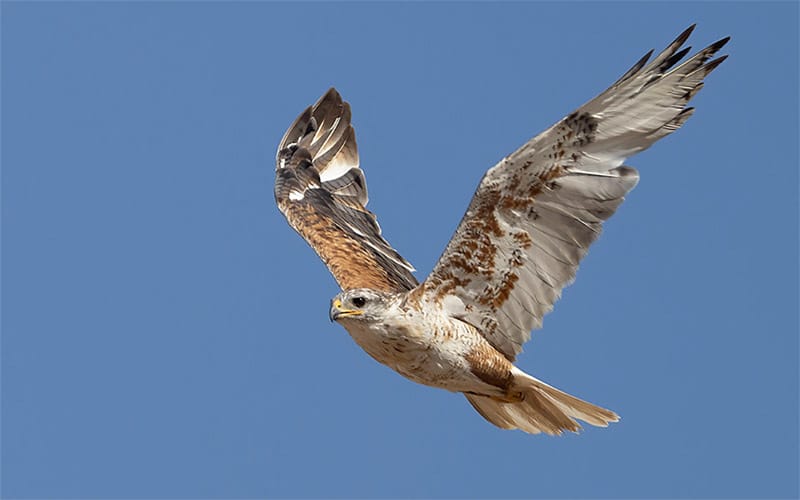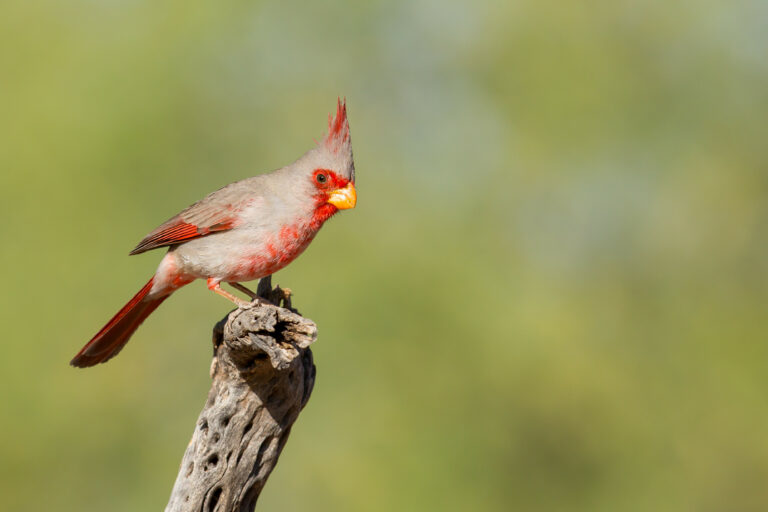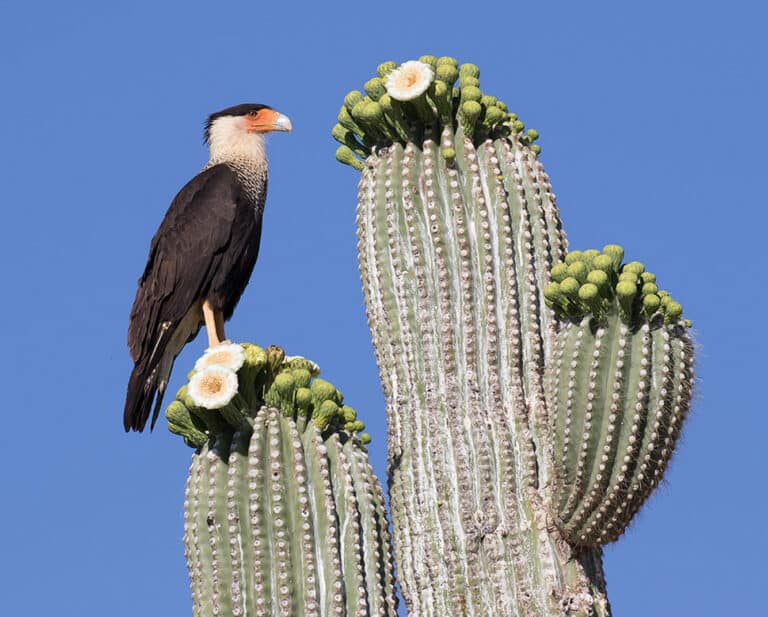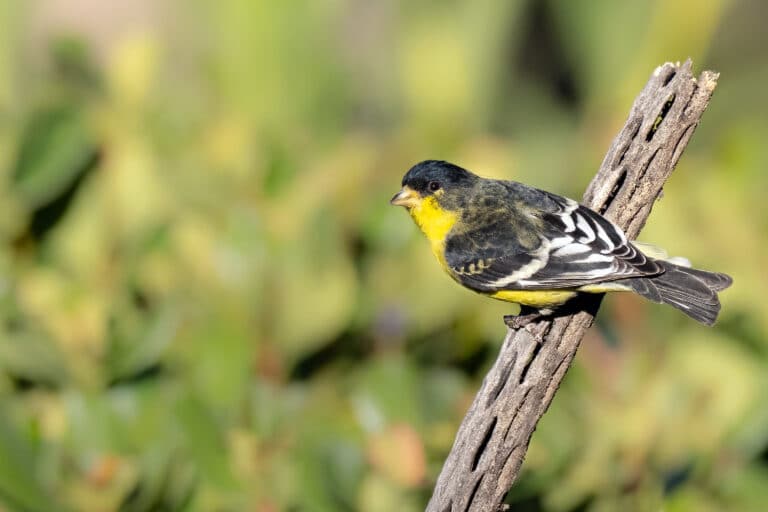The largest hawk in North America spends the winter near you if you live in Southeast Arizona. The massive Ferruginous Hawk is a migrant from its breeding grounds in central Canada, western and central US, and even northern Arizona, and can be found regularly just outside of Tucson from October until about early March. This beautiful bird has a lot in common with the Golden Eagle—both have feathered legs, build huge nests on cliffs and in trees, and feed on similar prey species. What it lacks in size compared to the eagle, it makes up for in just how striking its plumage is. Ferruginous Hawks have a huge, streaky, grayish head, rusty-red (ferruginous) shoulders and legs, pure white underparts, and they are a treat to see in flight. There is also a less common reddish, chocolate-brown dark morph, and a helpful ID characteristic for both is a very wide, yellow gape (area around the mouth) that is easily seen.
Ferruginous Hawk is a species of open country preferring plateaus, valleys, plains, rolling hills of grasslands, agricultural lands, and ranching areas. It uses prominent landscape features such as cliffs, rock outcroppings, lone trees, and structures such as oil, gas, and transmission towers for hunting and nest sites. If elevated substrates are absent, it will build its nest on the ground. And these nests are also massive, made of old, bulky twigs and branches, and even bison bones and wool!—all items difficult or next to impossible to be tightly woven together.
In Southeast Arizona, winter is the time to view Ferruginous Hawks at local sites such as the Santa Cruz Flats, east of the Chiricahua Mountains, Willcox, and the greater Sulphur Springs Valley. Here’s the trick: these areas have a lack of natural elevated perches, so check all those power poles and towers!
Image by Ned Harris




